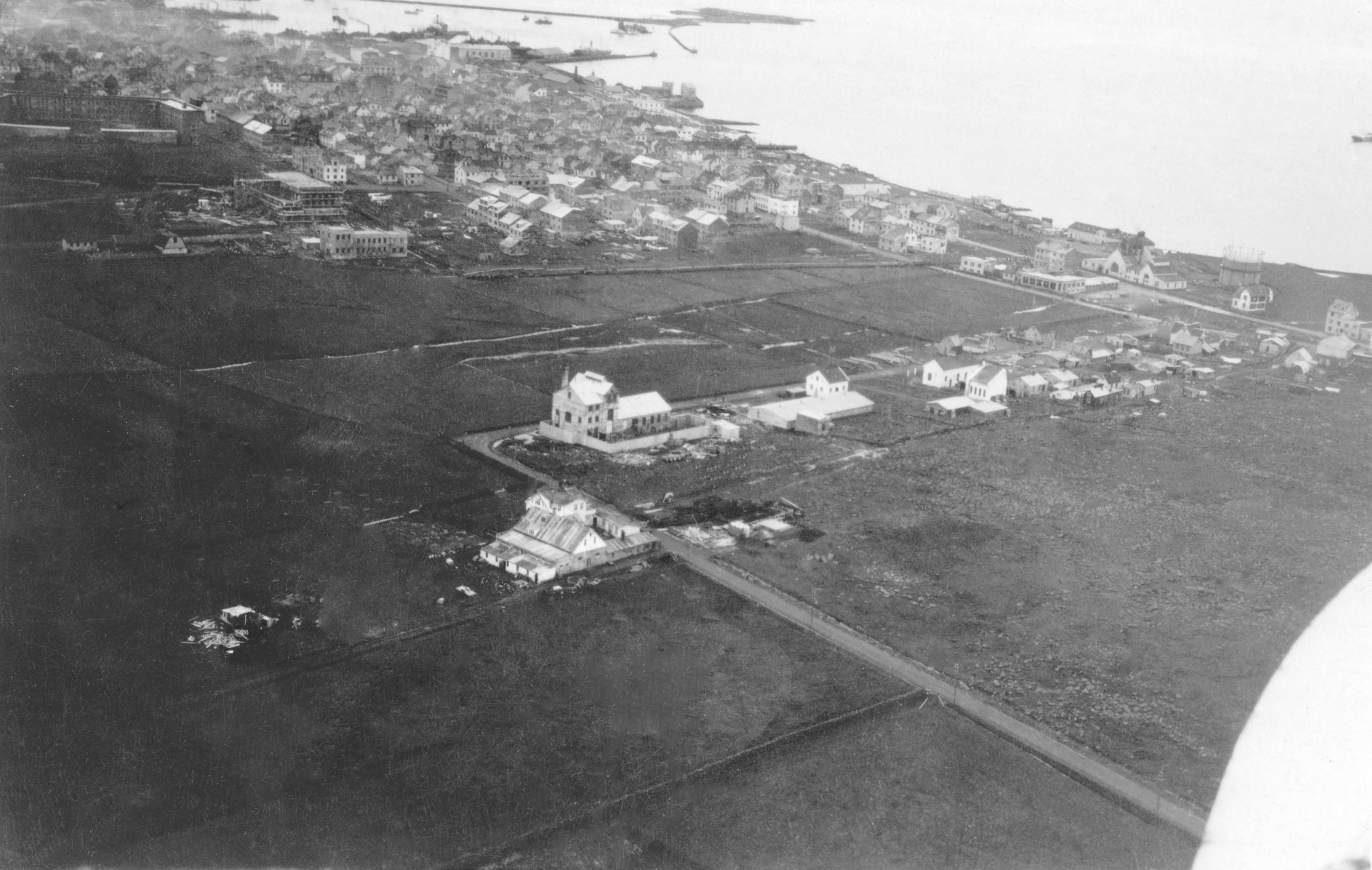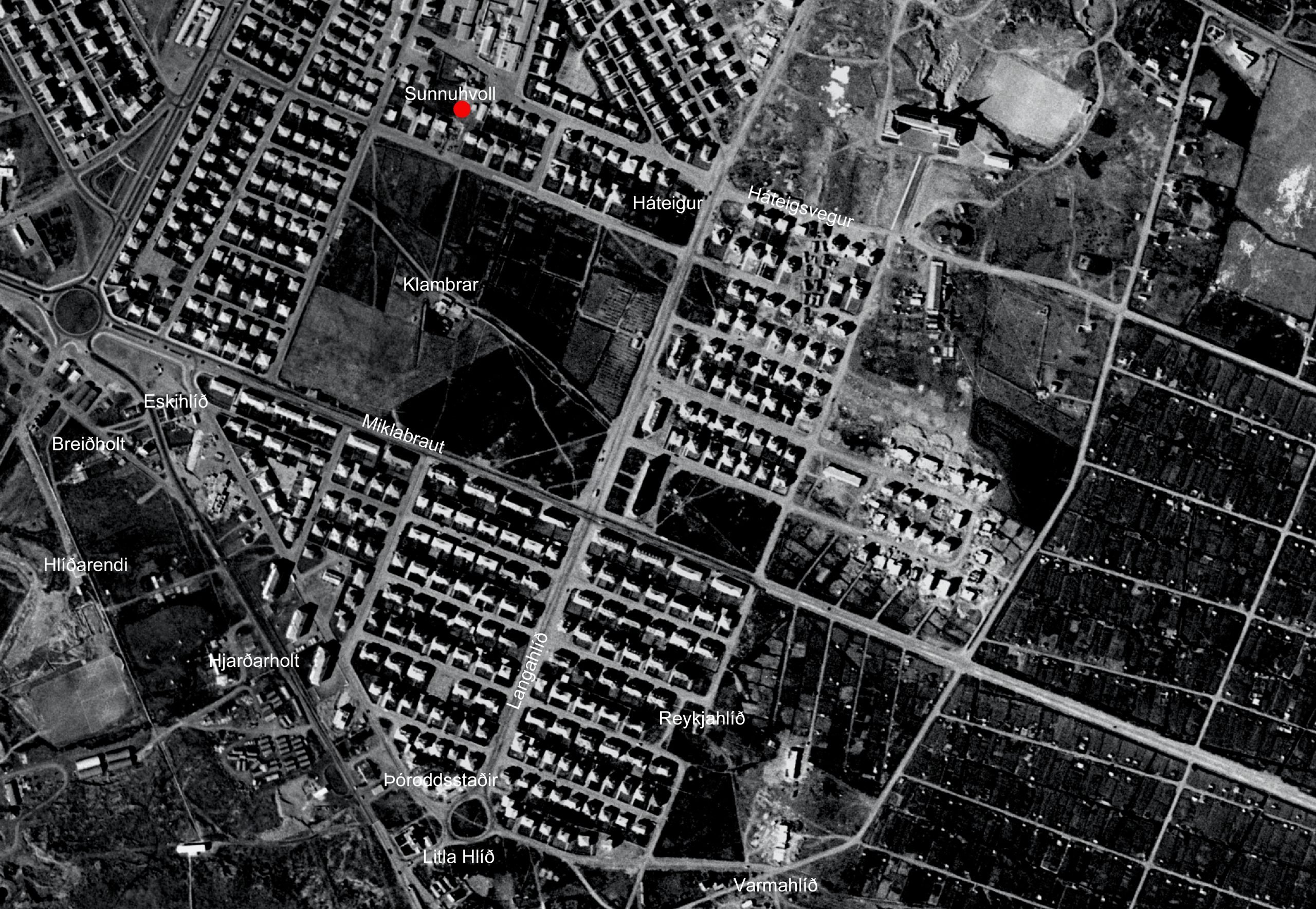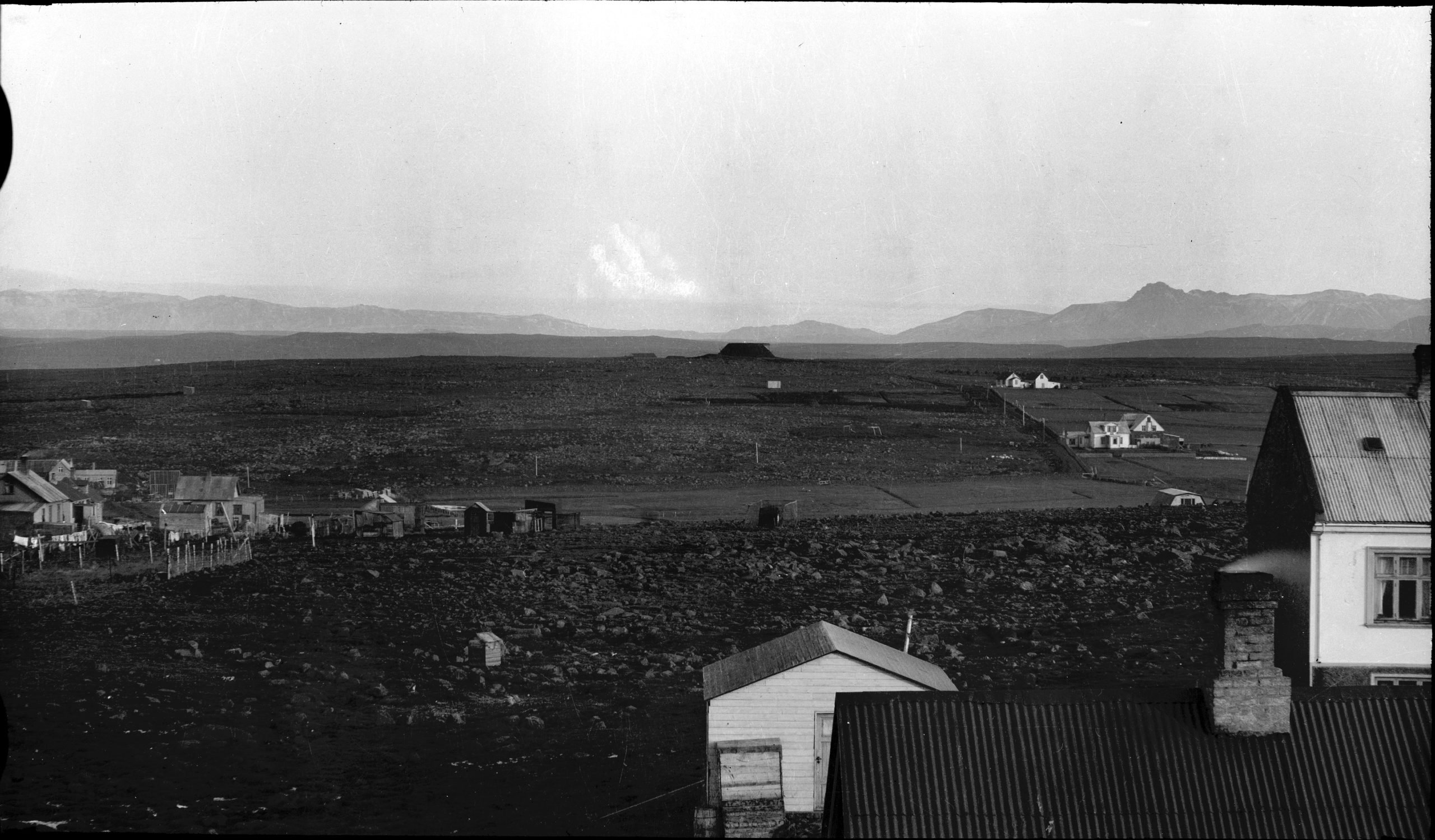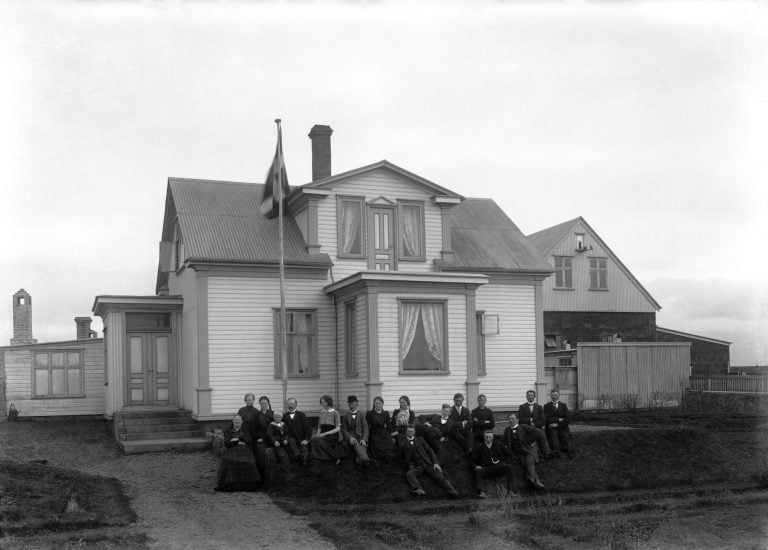
Sunnuhvoll farm, bottom centre, in 1930. Above the farm we see Þór brewery at the corner of Rauðarárstígur and Háteigsvegur, the gas station at Hverfisgata is at the far right and the Reykjavik swimming hall in construction on the left.
(Photo: Loftur Guðmundsson)Farmsteads in Reykjavík
In the late 19th and early 20th centuries drainage of marshland began in Reykjavík territory. The drained land was allocated for farming under leases with inheritance rights. Grassfields were cultivated on farms and smallholdings in these areas, where animal husbandry and agriculture were established.
A number of farms were established in Norðurmýri and in the area between Rauðarárholt and Öskjuhlíð. Two of them, Sunnuhvoll and Háteigur, were here, at the south and west of Rauðarárholt.
The Sunnuhvoll farmstead stood a little higher up from this location, at the present junction of Háteigsvegur and Þverholt. Watchmaker Pétur Hjaltested (1867-1953) was allocated the land with inheritance rights in 1891, and he built up a fine farm on the rocky land of the former peat bog. Pétur was innovative in his cultivation of grassfields and improvement of his land: he laid drains and installed piped water. By 1906 Pétur had constructed many buildings on the farmstead, around a square garden. The farmhouse was a lofty wooden house in the neoclassical style, facing towards Rauðarárstígur. It was equipped with various modern conveniences which were still rare in Iceland, such as a flush toilet and a bathtub with running water. The house had plumbing and drainage. Pétur‘s improvements to his land were much admired, and were shown off to eminent foreign visitors. Pétur gave up the farm in 1933, but Sunnuhvoll was farmed for several more years. The buildings were demolished in the 1950s, and Háteigsvegur was built over the site.


(Photo: Ólafur Magnússon)
Historical markers in Reykjavík
In recent years the City of Reykjavík has been installing historical markers around the city. Such markers at historic sites and areas within Reykjavík enrich the experience of both residents and visitors, and provide information on the city‘s culture and history. The markers display information about history, art, literature and social life relating to the site in question, accompanied by pictures.
Text and photos: Reykjavík City Museum
See further at www.reykjavikcitymuseum.is


